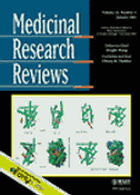
“The theory of a fetal origin of adult diseases links many pathological conditions to very early life events and is known as a “developmental programming” phenomenon. The mechanisms of this phenomenon are not quite understood and have been explained by inflammation, stress, etc. In particular the epidemic of obesity, with more than 64% of women being overweight or obese, has been associated with conditions in later life such as mental disorders, diabetes, asthma, and irritable bowel syndrome.
Interestingly, these diseases were classified a decade ago as Clinical Syndrome of Endocannabinoid Deficiency (CECD), which was first described by Russo in 2004.
Cannabinoids have been used for the treatment of chronic pain for millenniums and act through the mechanism of “kick-starting” the components of the endogenous cannabinoid system (ECS).
ECS is a pharmacological target for the treatment of obesity, inflammation, cardiovascular and neuronal damage, and pain.
We hypothesize that the deteriorating effect of maternal obesity on offspring health is explained by the mechanism of Fetal Syndrome of Endocannabinoid Deficiency (FSECD), which accompanies maternal obesity. Here we provide support for this hypothesis.”







